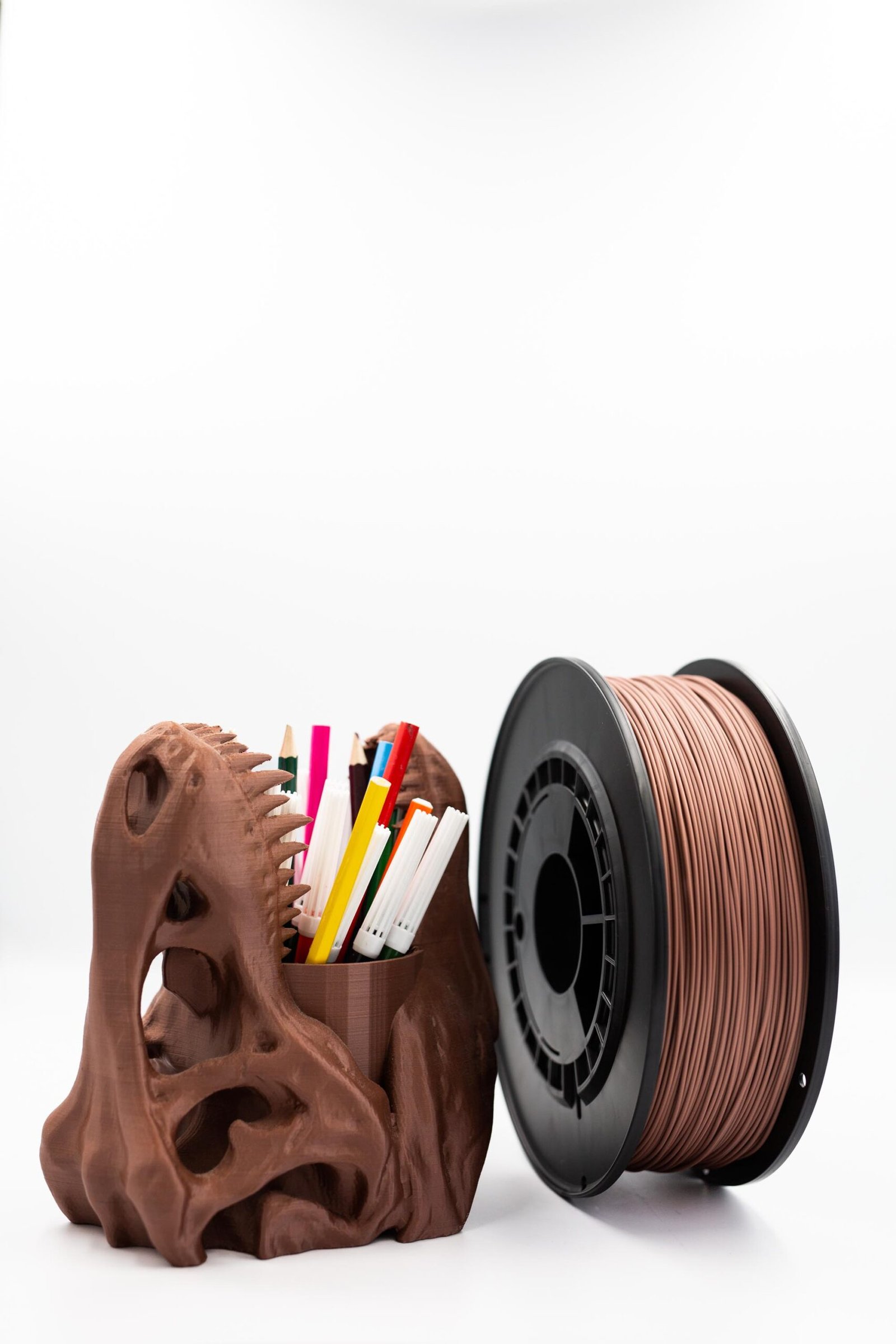When your 3D prints suddenly snap or crumble in your hands, it can be frustrating—especially after hours of printing. If you’ve ever wondered why your PLA print is brittle, you’re not alone. Many makers face the same problem, searching endlessly for a reliable PLA brittle fix or an effective brittle 3D print solution. This guide breaks down the science behind brittle PLA, how to fix it, and how to prevent it from happening again.
Recognizing a Brittle PLA Print
Visual and Tactile Symptoms
A brittle PLA print often gives itself away before it completely breaks. You might notice tiny cracks along the layers, flaking surfaces, or edges that chip easily. The part feels unusually stiff and snaps with little force. These are clear signs that your filament or print is losing elasticity and requires a PLA brittle fix before it worsens.
Printing Symptoms
If your printer starts producing inconsistent lines, gaps, or popping noises during extrusion, that’s another clue. Moisture and degradation can cause small bubbles to form in the molten filament, leading to weak prints. Knowing these signs early can help you apply the right brittle 3D print solution before wasting more material.
Why PLA Gets Brittle: The Underlying Causes
Moisture Absorption
PLA is a hygroscopic material, meaning it absorbs moisture from the air. When that happens, the absorbed water reacts with the polymer chains during extrusion, breaking them down. This degradation causes prints to become weak and fragile over time. The most common PLA brittle fix here is drying your filament before printing.
Overheating or Thermal Degradation
Sometimes, the culprit isn’t humidity but heat. Leaving PLA sitting in a hotend for too long or printing at excessively high temperatures can break down its structure. If your filament has turned darker or smells stronger than usual, it’s likely degraded. The best brittle 3D print solution is to lower your printing temperature or avoid long idle heating periods.
UV Exposure and Aging
Prolonged exposure to sunlight or UV light can make PLA brittle too. Over time, UV radiation causes the polymer chains to oxidize, leading to reduced flexibility. If your 3D prints are meant for outdoor use, a protective coating or UV-resistant storage is the ideal PLA brittle fix for long-term durability.
Poor Filament Quality or Additives
Not all PLA is created equal. Low-quality brands often contain fillers or pigments that weaken the filament. If you’re consistently getting brittle results, switching to a high-quality filament—like one specifically labeled as tough PLA—can be a straightforward brittle 3D print solution.
Stress Concentration & Geometry Issues
Design also matters. Thin walls, sharp corners, and poor layer adhesion increase internal stress, making parts prone to cracking. Revisiting your 3D model and improving structural design can be a surprisingly effective PLA brittle fix.
Diagnosing the Severity & What Can Be Repaired
If you’re unsure whether your PLA is salvageable, try a simple bend test. Take a small section and flex it gently. If it snaps easily, the damage may be permanent. However, if it bends slightly before breaking, moisture is likely the problem—and a brittle 3D print solution like drying can help. More severe cases, caused by UV or heat degradation, often require replacing the filament entirely.
How to Fix or Recover Brittle PLA
Proper Drying
Drying is the single most effective PLA brittle fix. Use an oven, food dehydrator, or specialized filament dryer. Set the temperature around 45°C (113°F) and let it dry for 4–6 hours. Make sure not to overheat the filament, as that can worsen the problem. Once dried, store it immediately in a sealed bag with desiccants to keep moisture out.
Re-Annealing Printed Parts
If your printed parts are already brittle, annealing can sometimes restore strength. Gently heating them in an oven at around 60–70°C (140–160°F) helps relieve internal stress and improve layer bonding. While this brittle 3D print solution can slightly warp dimensions, it’s useful for parts that need extra durability.
Using Additives or Blending
Mixing regular PLA with a tough PLA blend or small amounts of PETG can improve flexibility. These blends are designed as long-term PLA brittle fix options, ideal for parts that undergo mechanical stress or repeated bending.
Repairing Failed Prints
If your print has already snapped, you can still salvage it. Use epoxy or cyanoacrylate glue to rejoin broken parts, or reinforce them with resin coating. Though this isn’t a perfect brittle 3D print solution, it helps maintain functionality for non-mechanical parts.
Preventing Brittleness in Future Prints
Storage & Handling Best Practices
Always store PLA in airtight containers with silica gel packets. Avoid keeping spools near windows or in damp environments. Good storage habits are the simplest PLA brittle fix that prevents future problems before they start.
Optimal Printing Parameters
Fine-tune your printing temperatures to stay within 190–210°C, depending on the brand. Reduce retraction settings if you hear popping or clicking sounds. Balanced cooling also prevents micro-cracks and improves layer adhesion, a small but effective brittle 3D print solution.
Choosing Quality Filament
Investing in high-grade PLA pays off. Brands that test their material for moisture control and consistency drastically reduce brittleness issues. This proactive PLA brittle fix ensures stronger, more reliable results for every project.
Smart Design for Durability
Avoid thin walls, add fillets to sharp corners, and orient parts to maximize layer bonding. Stronger geometry means less stress on layers—and fewer brittle prints.
Summary & Action Plan
Brittle PLA is a common problem with simple causes and clear solutions. In most cases, the right PLA brittle fix involves moisture control, proper temperature management, and using quality materials. Keep your filament dry, optimize print settings, and store it properly to prevent brittleness from returning.
Whether it’s a small prototype or a complex functional piece, applying the right brittle 3D print solution ensures your prints stay strong, flexible, and ready to perform exactly as intended. With a bit of care and awareness, you’ll spend less time fixing broken parts—and more time creating perfect ones.

